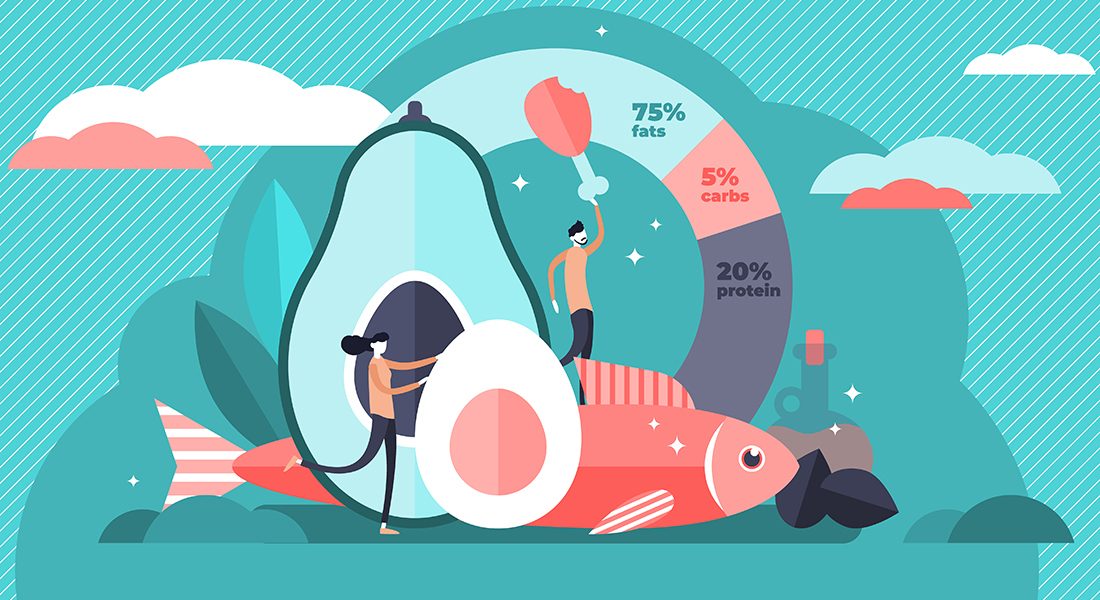Health & Wellness
Keto 101
A beginner’s guide to the ketogenic diet.
WHAT IS THE KETO DIET?
Low-carb diets have always been a fan favorite for quick, effective weight loss. However, the keto diet is much more than that. The idea is to minimize your intake of carbohydrates to about 5 percent of your daily nutrition so that your body enters a state of ketosis. This is when your body switches fuel. Normally, energy is taken from glucose—the sugar made from carbohydrates. In ketosis, your body uses energy from ketones, which are typically found in stored fats. So, less carbs burns more fat, which leads to weight loss.
HOW DOES IT HELP WEIGHT LOSS?
In addition to burning fat deposits for energy, a drastic low-carb diet can mean a lower caloric intake. Restricted caloric intake will inherently lead to short-term weight loss. Cutting out carbs and increasing protein and fats can also encourage weight loss as water-based glycogens (glucose storage) dwindle out of your body and water weight is lost. An increase in protein and fat consumption may also help you feel full and thus suppress your appetite.
WHAT ARE THE PROS AND CONS?
When it comes to short-term loss, low-carb diets come out on top, above low-fat or Mediterranean diets. But for lasting effects, remember this diet is high maintenance and requires a true change in lifestyle. And, as with any restrictive diet, there are some downsides to consider. Many people experience the “keto flu” in the first few days of fully embracing the keto diet. The symptoms are very similar to those of the actual flu and are caused by the shift in electrolyte balances. It is also critical to look out for any nutritional deficiencies: low sodium, low potassium, and low vitamin C can all lead to sluggishness, brain fog, and constipation. If this happens, it is important that you stay hydrated, avoid strenuous exercising, replace electrolytes, and get plenty of rest.
SO WHAT DO YOU ACTUALLY EAT?
Experts say to aim for a daily nutritional balance of 75 percent fats, 20 percent proteins, and 5 percent carbohydrates. When talking about fats, saturated fats are preferred. Oils and butters are high in saturated fats, as well as proteins like beef and pork. But unsaturated fats like nuts and avocado can helpful fulfill your daily fat intake goals. There are few restrictions on proteins, but fruits and vegetables can get tricky. Fruits should be kept to a minimum as they are high in sugar, yet a handful of berries can be had without breaking out of ketosis. Vegetables are restricted to primarily dark, leafy greens. Broccoli, cauliflower, brussels sprouts, bell peppers, cucumbers, and celery are all key players in this type of diet.
